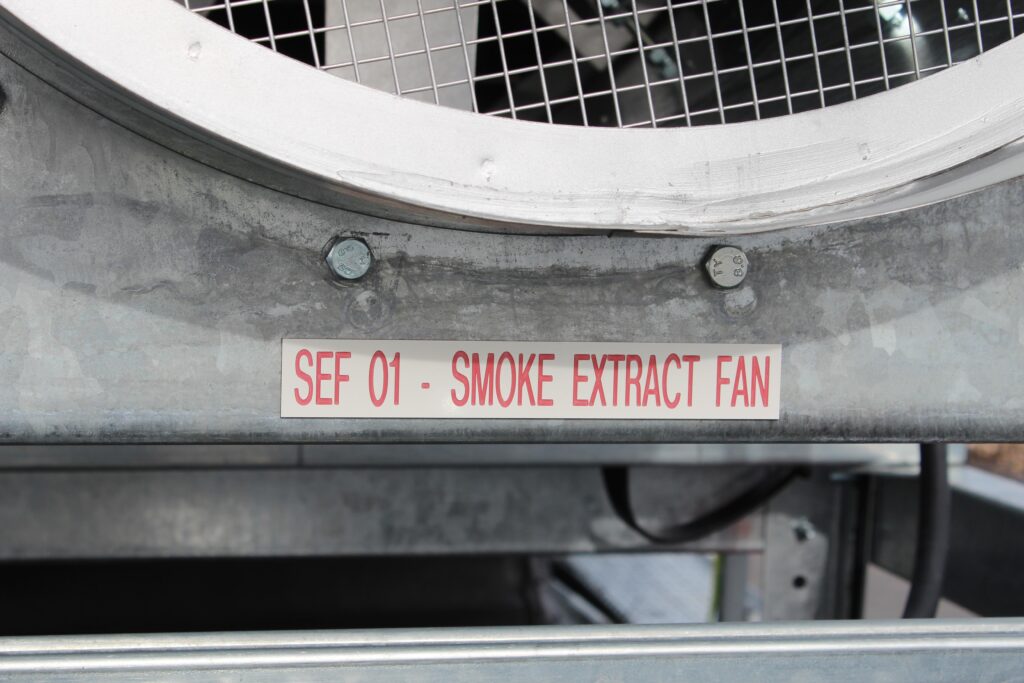With recent changes and updates to the fire safety regulations, Bijan Fard at FDS outlines the current landscape and how specifiers can ensure compliance.
In the past year, there has been increased attention on the fire safety of buildings, both in terms of the materials and designs. Ensuring that any new or refurbished building fully complies with or even exceeds all relevant legislation is crucial.
Building Regulations
In England and Wales, Approved Document B (ADB) of the Building Regulations (referred to as Part B in Wales) is one of the key sources of guidance on fire safety compliance for both residential and non-residential buildings. As an advisory document, it sets out the standards that must be met to ensure the risk posed by smoke and fire is minimised. However, while it does outline a set of standard solutions, it is not prescriptive about how the standard is achieved and states that:
“…there is no obligation to adopt a particular solution contained in an Approved Document if you prefer to meet the relevant requirement in some other way”
This allows fire safety engineering specialists to design bespoke approaches to suit the specific characteristics of a building, rather than strictly following the guidelines in what is referred to as a ‘code compliant’ approach. A fire engineered solution often allows challenges of the design to be overcome and enables the internal layout to be optimised whilst also maintaining the functional requirements of the codes.
Taking smoke ventilation as an example, the advice given on elements such as travel distances and escape routes is based on the assumption that a set of standard solutions will be used – in this case, a natural ventilation system. This is a relatively simple and cost-effective approach but relies on the natural movement of air to extract the smoke. Selecting a Mechanical Smoke Ventilation System (MSVS) that has a greater capacity and efficiency can allow longer travel distances to be permitted and, in some instances, the removal of the additional staircases recommended in the regulations while maintaining or even improving safety. Furthermore, a reduction in the shaft size can provide more free space, thus potentially reducing costs.
In November 2018, the government issued updates to ADB in response to the findings of Dame Judith Hackitt’s Independent Review of Building Regulations and Fire Safety. The amendments essentially implement the ban on combustible façade materials on buildings over 18m high. This applies to any building that includes residential dwellings as well as structures with an institutional purpose such as student accommodation, care homes and hospitals. In addition to new builds, the updated regulations apply to any change of use redevelopment and work to upgrade the thermal performance of buildings.
Approved Document B has also been updated to restrict the use of desktop studies or assessments in lieu of testing. This approach has been commonly used and is where previous test data is used to suggest how a system or materials will perform in the event of a fire. However, in reality, it is often impossible to accurately predict how it will react in practice as even small changes to the design or build up can significantly affect its fire performance.
In addition to ADB, Approved Document F of the Building Regulations also needs to be considered when designing smoke ventilation systems for underground or enclosed car parks. Car park areas that are not sufficiently naturally ventilated require mechanical or hybrid systems to monitor the air quality and provide ventilation to remove pollutants produced by vehicles, including carbon monoxide, to ensure a safe environment for users. This can often be combined with the emergency smoke ventilation solutions and therefore should be considered as part of the overall fire strategy.
Regulatory Reform (Fire Safety) Order 2005
Another key piece of fire safety legislation is the Regulatory Reform (Fire Safety) Order 2005 (or RRO). The order must be complied with throughout the operational life of a building and applies to most non-residential properties, including offices and shops, pubs, clubs and restaurants, hotels and care premises, such as hospitals and care homes. RRO introduced the need for employers to appoint a ‘responsible person’ (usually the building’s owner or manager), who must carry out a fire-risk assessment and ensure that all reasonable steps are taken to guarantee the safety of building users.
Any breaches of the fire safety standards can result in enforcement action, which could include a prohibition notice, building closure and potential prosecution resulting in fines or even imprisonment for building owners and managers.
While the regulations provide a minimum standard of fire safety, for many building owners it is not simply about complying with the regulations. In fact, the events of recent years have demonstrated the importance of going beyond the minimum to optimise the safety of building occupants. The complexity of applying the standards in practice means that expert guidance from fire engineering consultants is vital to not only comply with the regulations but improve the level of safety of building occupants.

